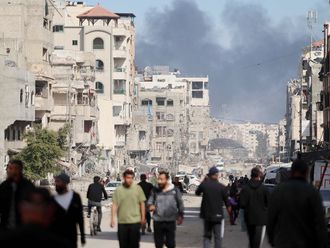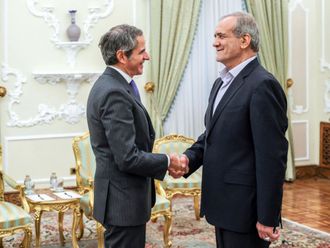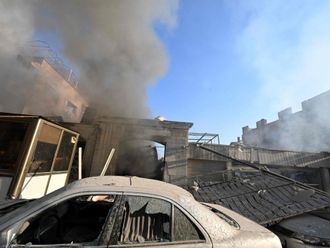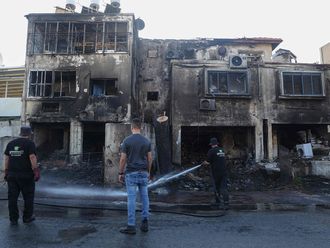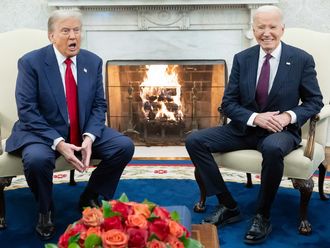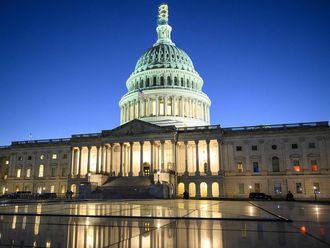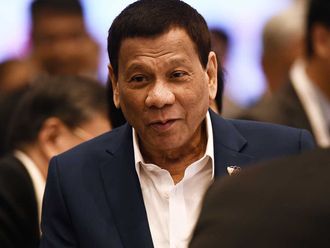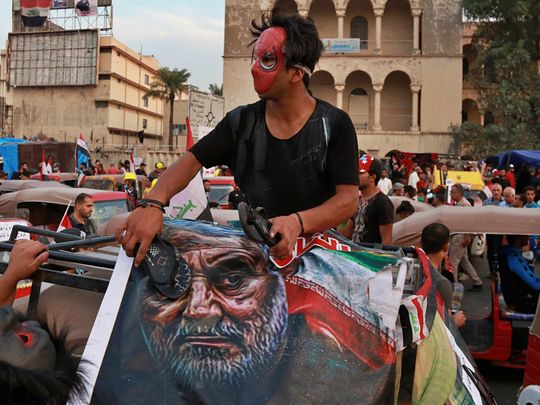
Dubai: Earlier this month, Iran stepped in to prevent the ouster of Iraqi Prime Minister Abdel Abdul Mahdi by two of Iraq’s most influential figures amid weeks of anti-government demonstrations.
Populist Shi’ite cleric Moqtada Al-Sadr demanded in October that Abdul Mahdi call an early election to quell the biggest mass protests in Iraq since the US-led invasion that toppled Saddam Hussein in 2003.
Anger, economic hardship
The demonstrations are fuelled by anger at corruption and widespread economic hardship.
Sadr had urged his main political rival Hadi al-Amiri, whose alliance of Iran-backed militias is the second-biggest political force in parliament, to help push out Abdul Mahdi.
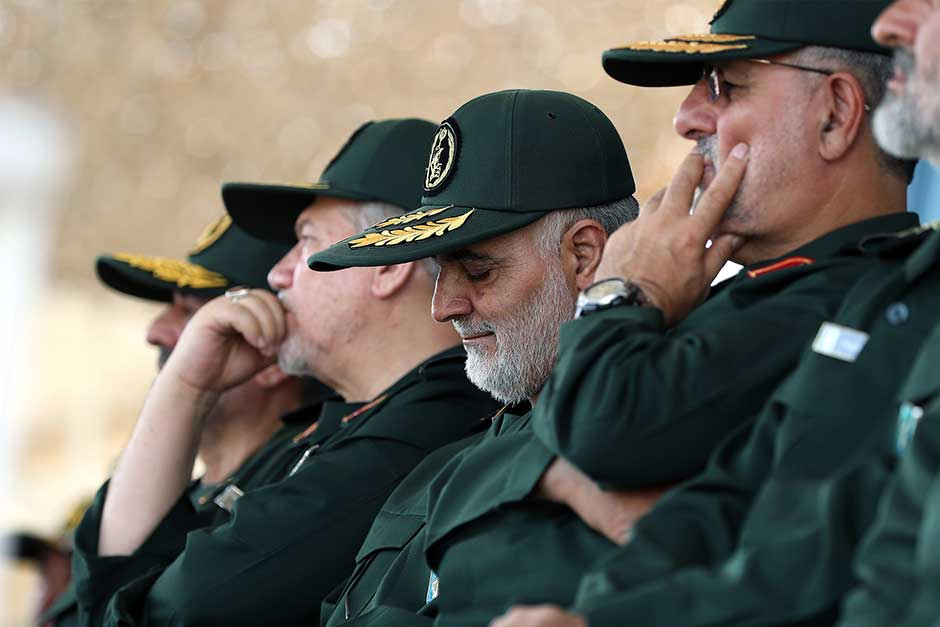
But in a secret meeting in Baghdad on Wednesday, Qassem Soleimani, head of the Iranian Revolutionary Guards’ elite Quds Force, intervened.
Soleimani asked Amiri and his militia leaders to keep supporting Abdul Mahdi, five sources with knowledge of the meeting, told Reuters.
Soleimani, whose Quds force coordinates Tehran-backed militias in Iraq, Syria and Lebanon, is a frequent visitor to Iraq.
However, his direct intervention is the latest sign of Iran’s increasing influence in Iraq and across the region.
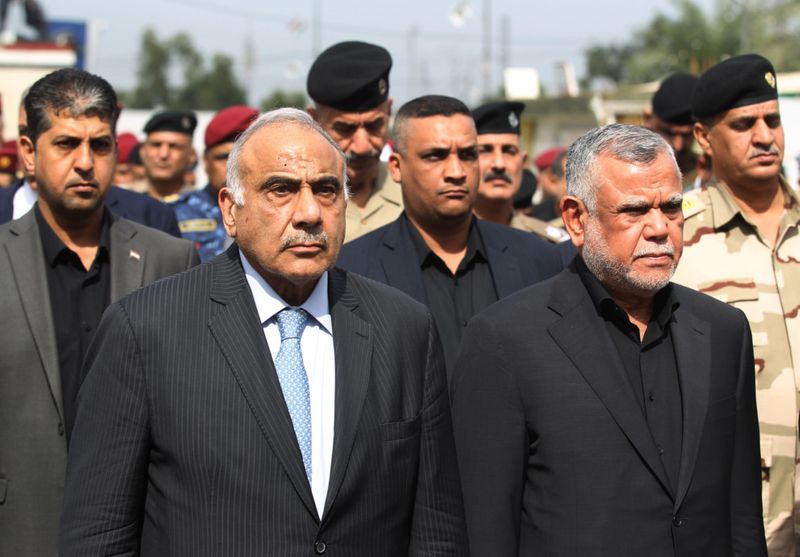
Leaked documents
On Monday, the New York Times published leaked Iranian documents showing just how aggressively Tehran worked to embed itself in Iraq’s affairs.
The documents expose Soleimani’s role in particular.
The documents are contained in an archive of secret Iranian intelligence cables obtained by The Intercept and shared with The New York Times for this article, which were published simultaneously by both news organizations.
The unprecedented leak shows just how entrenched Iran is in the internal affairs of Iraq.
It goes into detail of the painstaking work carried out by Iranian spies to co-opt the country’s leaders, pay Iraqi agents working for the US to switch sides and infiltrate every aspect of Iraq’s political, religious and economic life.
The way the documents read is much like a spy novel: meetings held in dark alleyways or under the cover of a birthday party; informants lurk at Baghdad’s airport and snap pictures of US soldiers.
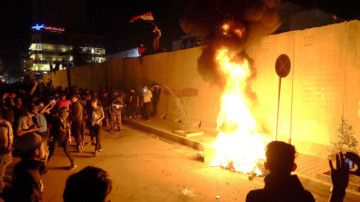
One of the documents details Abdul Madi’s “special relationship with the Islamic Republic of Iran” when he was Iraq’s oil minister in 2014.
In fact, in Iraq, most of its important officials in politics, the military or security apparatus have secret ties to Iran, according ot the documents.
While it is widely known that Iran plays a big role in Iraq’s domestic politics, the extent of its interference has been made evident in these documents.
It also shows how both the US and Iran have used Iraq as a staging area for spy operations against each other.
The role of the Guards
In Iraq, Lebanon and Syria, which Iran views as crucial to its national security, the Revolutionary Guards — and in particular its elite Quds Force, led by General Soleimani — determines Iran’s policies.
Ambassadors to those countries are appointed from the senior ranks of the Revolutionary Guards, not the foreign ministry, which oversees the intelligence ministry, according to several advisers to current and past Iranian administrations.
Officers from the intelligence ministry and from the Revolutionary Guards in Iraq worked parallel to one another, said these sources. They reported their findings back to their respective headquarters in Tehran, which in turn organized them into reports for the Supreme Council of National Security.
How did Iran tighten its grip in Iraq?
The documents show that Iran moved into Iraq very quickly after the US troop withdrawal in 2011.
It immediately added CIA informants to its payroll and started to recruit spies from inside the US State Department. (Although the department is not specifically named in the report it is understood to be the State Department.)
The State Department declined to comment on the matter.
The reason for this stepped up espionage was Iran’s view that monitoring US activity in Iraq was essential to its survival and national security.
About the cables
The archive contains hundreds of reports and cables written mainly in 2014 and 2015 by officers of Iran’s Ministry of Intelligence and Security, or M.O.I.S., who were serving in the field in Iraq.
The intelligence ministry, Iran’s version of the C.I.A., has a reputation as an analytical and professional agency, but it is overshadowed and often overruled by its more ideological counterpart, the Intelligence Organization of the Islamic Revolutionary Guard Corps, which was formally established as an independent entity in 2009 at the order of Iran’s supreme leader, Ayatollah Ali Khamenei.
The roughly 700 pages of leaked reports were sent anonymously to The Intercept, which translated them from Persian to English and shared them with The Times.
The Intercept and The Times verified the authenticity of the documents but do not know who leaked them.
The Intercept communicated over encrypted channels with the source, who declined to meet with a reporter. In these anonymous messages, the source said that they wanted to “let the world know what Iran is doing in my country Iraq.”


